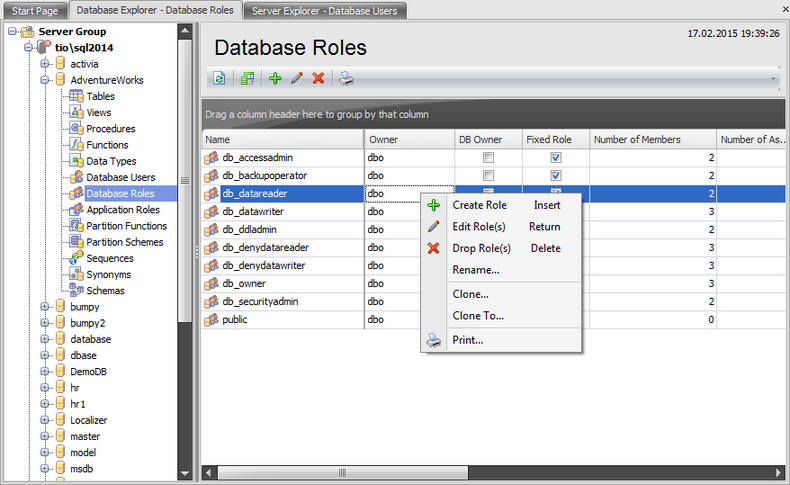Online Documentation for SQL Administrator for SQL Server
Database Roles
All users interact with SQL Server within the context of a database-level principal - Database Role. A user can belong to multiple groups and have multiple roles, and the operations that are permitted by each role determine the actions that the user can perform. It is necessary to create SQL Server database roles when a group of users needs to perform a specified set of activities in the database.
Use the context menu or buttons on the work area toolbar to manage the list of database roles:
![]() create a new database role
create a new database role
![]() edit selected database role(s)
edit selected database role(s)
![]() drop selected database role(s)
drop selected database role(s)
- rename selected database role
- create the object copy on the same server
- clone the object copy to another server
![]() create and print the report
create and print the report
Alternatively, you can use the 'Insert' button to create a role, 'Enter' button to edit role(s) and 'Delete' button to drop role(s).

The list displays the existing database roles as a grid with the following columns: Name, Owner, DB Owner, Fixed Role, Created, Modified, Number of Assigned Roles, Number of Members. If more convenient, you can change the order of the columns by dragging their headers horizontally. See the Working with grid section of the SQL Administrator documentation to find out operations that can be performed with the grid.
To open a Database Role in the Role Editor, double-click it in the grid. Alternatively, you can right-click the Database Role alias and select the Edit Role(s) context menu item.



































































